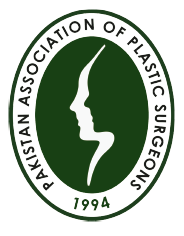
Scalp defects are commonly encountered in case of trauma or tumor excision.
Reconstruction depends on the areas involved in trauma or tumor. The reconstructive option with respect to size and depth of defect is:
Skin only o Bone not exposed Skin grafting o Bone exposed
Small to moderate size (roughly till 10x10cm wound) scalp rotational
flap (rotation of hair bearing skin from normal area to the area of
exposed bone) Major wound Such wounds might need microvascular reconstruction by bringing full thickness skin from forearm, thigh or back . This surgery may last for 6 to 8 hours as it requires anastomosis of blood vessels to keep that flap alive. o Bone involvement (scalp bone has outer and inner tables) Involvement of outer table does not need bone reconstruction Involvement of both tables will need reconstruction with prosthetic mesh / or artificial bone or outer table of bone from normal area of scalp to cover the defect.
Most of the times patient recovers smoothly
Minor wound infections or partial skin necrosis
Approximate duration of procedure
2 to 6 hours (depending on extent of involvement)
Approximate duration of hospital stay
2 to 5 days (may extend if procedure requires more than one sittings)
Chances of success
More than 95%
Long term effects
Hairless skin which may need hair transplant or any other secondary procedure.
Setup required for procedure
Inpatient stay
Outcome depends on the location and size of the fistula and status of surrounding tissues. Although most of the fistula closes after the surgery, some may recur and requires further surgery.
It usually takes less time than the original hypospadias repair and completes in less than an hour.
The surgery is performed under general anaesthesia and as a day care procedure. Patient can go home the same day after recovery from anaesthesia.
The most common complication is recurrence of the defect. Others complications include infection, difficulty in urination and stricture formation


